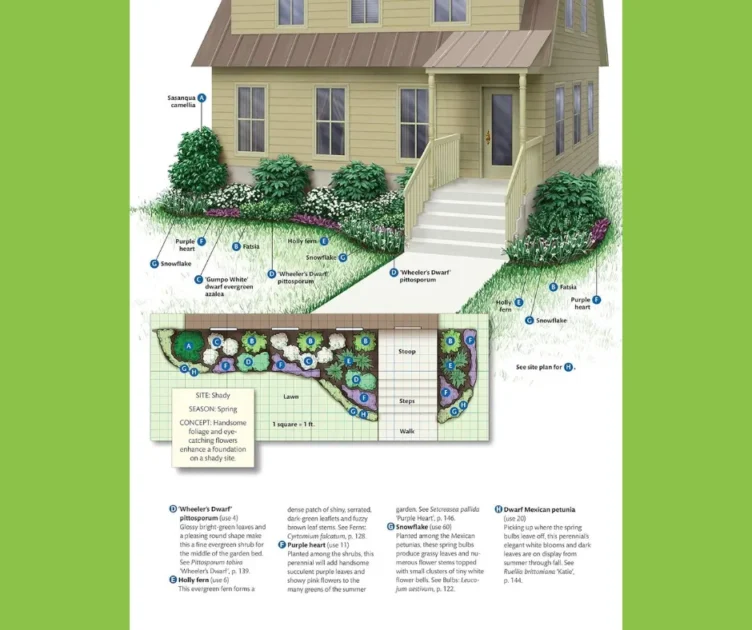Proper Plant Selection in Landscaping
Selecting the Proper Plant Selection in Landscaping that’s the right plants for your climate is crucial for the success and longevity of your outdoor space.
Not only do plants enhance the aesthetic appeal of your landscape, but they also serve important functional purposes such as providing shade, reducing erosion, and attracting pollinators.
However, with a wide variety of plants available in the market, it can be overwhelming to know which ones are suitable for your specific climate.
This is where proper plant selection comes into play.
By choosing the right plants for your climate, you can ensure that your landscape thrives and remains visually appealing throughout the year.
In this article, we will delve into the importance of proper plant selection in landscaping and provide practical tips on how to choose the right plants for your climate.
Whether you are a seasoned gardener or a novice looking to create a beautiful outdoor space, understanding the significance of proper plant selection is essential for achieving a successful and sustainable landscape.
Table of Contents Proper Plant Selection in Landscaping
Maximize curb appeal with climate-appropriate plants
To create a visually stunning and well-maintained landscape, it is essential to maximize curb appeal with climate-appropriate plants.
Choosing the right plants for your specific climate not only enhances the overall aesthetics but also ensures their survival and longevity.
By selecting plants that are well-suited to the local environment, you can minimize the need for excessive watering, fertilizers, and pest control, thus promoting a sustainable and eco-friendly approach to landscaping.
Additionally, climate-appropriate plants have a higher chance of thriving in their natural habitat, resulting in healthier growth and vibrant colors that enhance the overall appeal of your property.
Whether you are dealing with scorching heat, chilly winters, or high humidity, investing time in researching and selecting plants that are compatible with your climate will undoubtedly yield a beautiful and resilient landscape that stands out in your neighborhood.
Avoid costly replacements with informed selection
When it comes to landscaping, one of the most important aspects to consider is the selection of plants that are well-suited to your specific climate.
Making informed choices in this regard can significantly help you avoid costly replacements down the line.
By choosing plants that are adapted to the unique weather conditions, temperature extremes, and soil types of your region, you are increasing their chances of thriving and minimizing the risk of plant failure.
Additionally, climate-appropriate plants are more likely to have built-in resistance to common pests and diseases, reducing the need for expensive treatments and interventions.
By taking the time to research and select plants that are compatible with your climate, you are making a wise investment in your landscape, ensuring its long-term durability and minimizing unnecessary expenses.
Create a sustainable landscape with careful choices
To create a sustainable landscape with careful choices, it is essential to consider factors beyond just the climate compatibility of plants.
Sustainable landscaping involves making conscious decisions that promote environmental health and reduce resource consumption.
Opting for native plants not only guarantees their adaptability to the local climate but also supports the preservation of indigenous biodiversity.
These plants have developed natural defenses against pests and diseases, reducing the need for chemical interventions.
Furthermore, choosing low-maintenance varieties can minimize water usage and the use of fertilizers, contributing to water conservation and reducing environmental impact.
Additionally, incorporating elements such as rain gardens or permeable paving can help manage stormwater runoff, preventing soil erosion and minimizing pollution of local water sources.
By carefully selecting plants and incorporating sustainable practices into your landscape, you play a vital role in conserving natural resources and creating a thriving ecosystem.
Increase property value through strategic planting
Strategic planting can significantly increase the value of your property.
By carefully selecting and placing the right plants in your landscape, you can create a visually appealing and well-designed outdoor space that leaves a lasting impression.
The curb appeal of your property plays a crucial role in attracting potential buyers or tenants, and a thoughtfully designed landscape can make a strong positive impact.
Incorporating features such as trees, shrubs, and flowers in strategic locations can enhance the overall aesthetics of your property, creating a welcoming and inviting atmosphere.
Furthermore, well-maintained landscaping can improve the functionality and usability of outdoor areas, providing additional living and recreational spaces.
Whether it’s creating a cozy patio area or a vibrant garden, strategic planting can transform your property into a desirable and valuable asset.
Elevate your outdoor space effortlessly
To truly elevate your outdoor space effortlessly, it is essential to consider the importance of proper plant selection in landscaping.
Choosing the right plants for your climate is crucial for the long-term success and beauty of your outdoor environment.
By selecting plants that are well-suited to your specific climate conditions, you can ensure their resilience and ability to thrive in your region.
This not only reduces the risk of plant failure but also minimizes the need for excessive maintenance and intervention.
Additionally, choosing the right plants for your climate allows you to create a harmonious and cohesive landscape design that complements the natural surroundings.
From drought-tolerant plants in arid climates to cold-hardy varieties in colder regions, each plant selection contributes to the overall aesthetic and functionality of your outdoor space.
So, take the time to research and consult with professionals to make informed choices in plant selection, and watch as your outdoor space effortlessly transforms into a stunning and sustainable haven.
In conclusion, choosing the right plants for your climate is crucial in creating a successful and sustainable landscape.
By considering factors such as temperature, precipitation, and soil conditions, you can ensure that your plants will thrive and enhance the overall aesthetic of your outdoor space.
Remember to research and consult with professionals to determine which plants are best suited for your specific climate.
With proper plant selection, you can not only create a beautiful landscape, but also contribute to the health and longevity of your plants.
Remember, the key to a flourishing landscape is choosing the right plants for your climate.
FAQ
How does choosing the right plants for your climate impact the success of your landscaping project?
Choosing the right plants for your climate is crucial for the success of your landscaping project.
When you select plants that are well-suited to your specific climate, they are more likely to thrive and flourish in your garden.
By considering factors such as temperature, sunlight, rainfall, and soil conditions, you can ensure that the plants you choose will be able to adapt and withstand the local climate.
This not only increases the chances of your plants surviving, but it also reduces the need for excessive maintenance and intervention.
Ultimately, choosing climate-appropriate plants will result in a more beautiful and sustainable landscape.
What are the potential consequences of selecting plants that are not suitable for your climate?
If you choose plants that are not well-suited for your climate, you may face various consequences.
Second person point of view: “When you select plants that do not match your climate, you risk experiencing adverse consequences.
Your plants may struggle to thrive and may not be able to withstand the extreme temperatures or weather conditions in your area.
The plants could become weak, susceptible to diseases, or even die.
Additionally, you may end up wasting time, money, and effort on plants that ultimately fail to flourish.
It is crucial to research and choose plants that are compatible with your climate to ensure their successful growth and longevity.
“
How can proper plant selection help conserve water and reduce the need for irrigation in landscaping?
By selecting drought-tolerant plants for your landscaping, you can conserve water and minimize the need for irrigation.
These plants have adapted to survive in arid conditions and require less water to thrive.
Opting for native species also helps, as they are accustomed to the local climate and soil conditions.
By choosing plants that are well-suited for your region, you can reduce water consumption and promote sustainable landscaping practices.
Additionally, incorporating mulch around plants can help retain soil moisture, further reducing the need for irrigation.
Overall, careful plant selection plays a crucial role in water conservation and reducing irrigation requirements in landscaping.
What factors should be considered when selecting plants for different climate zones?
When selecting plants for different climate zones, you should consider factors such as temperature, humidity, rainfall, and sunlight.
Take into account the average temperature range throughout the year and choose plants that can tolerate those conditions.
Consider the humidity levels, as some plants thrive in more humid climates while others prefer drier conditions.
Pay attention to the amount of rainfall in the area and select plants that can handle either high or low amounts.
Lastly, consider the sunlight exposure in the specific location and choose plants that can thrive in full sun or shade accordingly.
How does choosing the right plants for your climate contribute to the overall sustainability and long-term health of your landscape?
Choosing the right plants for your climate is crucial for maintaining the sustainability and long-term health of your landscape.
By selecting plants that are well-suited to the local climate, you ensure they can thrive in the natural conditions of your area.
This reduces the need for excessive watering, fertilizers, and pesticides, resulting in a more environmentally-friendly approach to landscaping.
Additionally, climate-appropriate plants are more resistant to diseases and pests, reducing the need for chemical interventions.
Overall, planting the right plants helps create a balanced and resilient ecosystem, promoting the longevity and health of your landscape.







